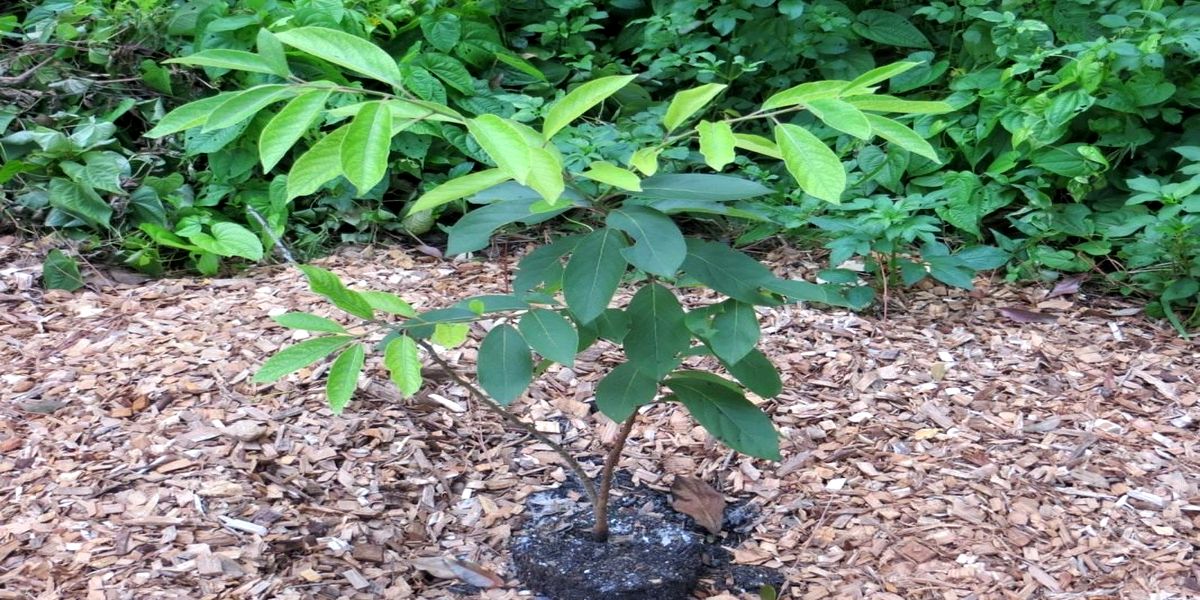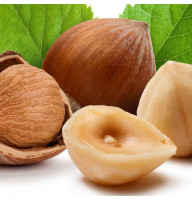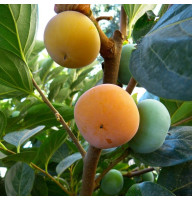Persimmon - (Diospyros), a genus of trees and shrubs of the Ebony family, numbering about 200 species, growing in tropical and subtropical countries. Persimmon originates from Japan and is famous for its magnificent fruits. The common cultivated varieties are common or Caucasian persimmon (D. lotus), eastern persimmon (D. Kaki), and more winter-hardy virgin persimmon (D. Virginia); Breeders have obtained many varieties. Persimmon is propagated by seeds and grafting on seedlings of Caucasian and Virginia persimmon.
The persimmon fruit tree reaches a height of 8-12 meters and is completely strewn with large (up to 8 cm in diameter) fleshy fruits of various shapes; its yield is about 250 kg.
Persimmon is called the «plum of the gods» for its amazing sunny golden-orange fruits with sweet - delicate jelly-like or dense (in some varieties with a brown tint) - pulp and a delicate aroma reminiscent of apricot. Juicy persimmon fruits are not only beautiful and tasty, but very healthy and considered healing: they contain sugar, vitamin C, iron and other valuable vitamins and microelements.
Flower growers who love exotic plants and experiments have accumulated some experience in growing persimmons from seeds at home. The seeds are extracted from ripe persimmon fruits (not freezing them for a very long time is acceptable), washed, dried for several hours, treated with growth stimulants, planted in a pot, and watered. A pot of persimmon seeds is placed in a plastic bag and placed in a warm place. 2 weeks after planting, shoots appear: the persimmon sprout is quite long (about 10-15 centimeters). The persimmon seed valves are very hard, so only very strong sprouts can free themselves from them. You can try to help weak sprouts with this, but you need to do this carefully - persimmon sprouts are very fragile and break easily, but it’s still worth the risk (otherwise they will die under the bone «cap»).
On a bright, warm window, a persimmon sprout grows quickly, its root system is actively forming and growing. Therefore, as the seedling grows, it is necessary to make several transfers into a larger pot after entwining the earthen ball with roots, otherwise the seedling will be delayed in growth, the leaves will become smaller and yellow from a lack of substrate. At a young age, the persimmon tree needs annual replanting in the spring; An adult plant is replanted less frequently (every 3-4 years).

In indoor conditions or in a winter garden, a persimmon tree usually grows up to 1,5 meters (you can limit its growth by pruning, and the splendor of the crown by regular shaping).
In summer, the persimmon tree is placed in a bright and wind-protected place outside, regularly watered and sprayed; flowering occurs in June. During the active growing season, persimmons are fed twice a month with mineral fertilizers with a low nitrogen content.
In winter, persimmons are kept cool (at a temperature of about 5 degrees, not higher than 10 degrees); the soil must be periodically moistened with soft water at room temperature, and the plant must be sprayed. Excessive watering is very harmful and leads to the death of the persimmon tree.
Persimmon: growing from seed, how to plant this heat-loving plant in the garden?
Many amateur gardeners, through numerous experiments, have made growing persimmon trees in their dachas their favorite activity. According to them, good results are obtained only when the persimmon seed for cultivation is taken from a fruit that has ripened in their region from other gardeners. Persimmons bought in a store, as a rule, do not live up to expectations and do not produce a decent harvest.

To obtain the seed needed for germination, take a ripe persimmon fruit grown in your region and place it in the sun for several days until its flesh becomes very soft and begins to spoil. Experienced gardeners advise taking Virginia persimmon seeds for germination, since they are not very demanding and have good resistance to frost.
A carefully removed pit from a sun-ripened fruit should be thoroughly washed and dried. I would like to note that Virginia persimmon seeds do not require additional stratification. Before planting, the seed should be soaked in water at room temperature for several hours - this will speed up its germination. Well, it is better to take fertile, and preferably neutral, soil for planting seeds.

It is better to germinate seeds at home in a regular flower pot with moist soil. The seed is buried in a hole 2-3 cm deep, after which the pot must be covered with a glass cap to create a greenhouse effect. Growing a persimmon tree should take place in a warm and well-lit place. The seed germinates within two weeks, after which the glass is removed. In order for the seedling to grow faster and its root system to develop correctly, the seed must be carefully separated from the young sprout and removed from the pot.
Garden persimmon: planting and growing seedlings on your site
Planting persimmon trees and caring for them is quite a troublesome and responsible task, since the seedlings grow quite quickly and require frequent replanting. Young plants need to be moved along with their soil very carefully so as not to damage the fragile root system of the seedlings. In order for the persimmon to bear fruit faster, its sprout, which has reached a height of 20 cm, is vaccinated, which can be purchased from breeders.

When choosing a location for planting young persimmons, it is important to remember that the tree loves space and good lighting, but it is better to avoid direct exposure to the sun!
Persimmon loves moisture very much, so it needs to be watered often and in sufficient volume so that the water completely saturates the soil at its roots. But you shouldn’t overdo it in this process either, otherwise the delicate roots of the plant will begin to rot, and the tree may die. To ensure that the seedling takes root well and its trunk does not dry out on hot days, it should also be sprayed with water daily.
How to fertilize persimmons grown from seeds?
A young persimmon tree needs to be fertilized throughout its growing season. From early spring until the onset of autumn, it is fed once every 14 days with mineral fertilizers and organic fertilizers alternately. From spring mineral fertilizers it is better to take nitrogen, potassium and phosphorus (for example Nitroammofoska). But at the time of increased persimmon growth, it is recommended to use mineral fertilizers with a small amount of nitrogen. And finally, gardeners advise not to use manure while the tree is fruiting.

If you provide the persimmon with all the conditions necessary for full growth and development, then within the expected time frame it will bloom with a large number of beautiful white flowers, which will be considered a harbinger of a rich harvest of your favorite fruit. The persimmon that you grew from a seed will begin to bear fruit only 5-7 years from the moment it was planted. But, you must admit, the wait is worth it!













